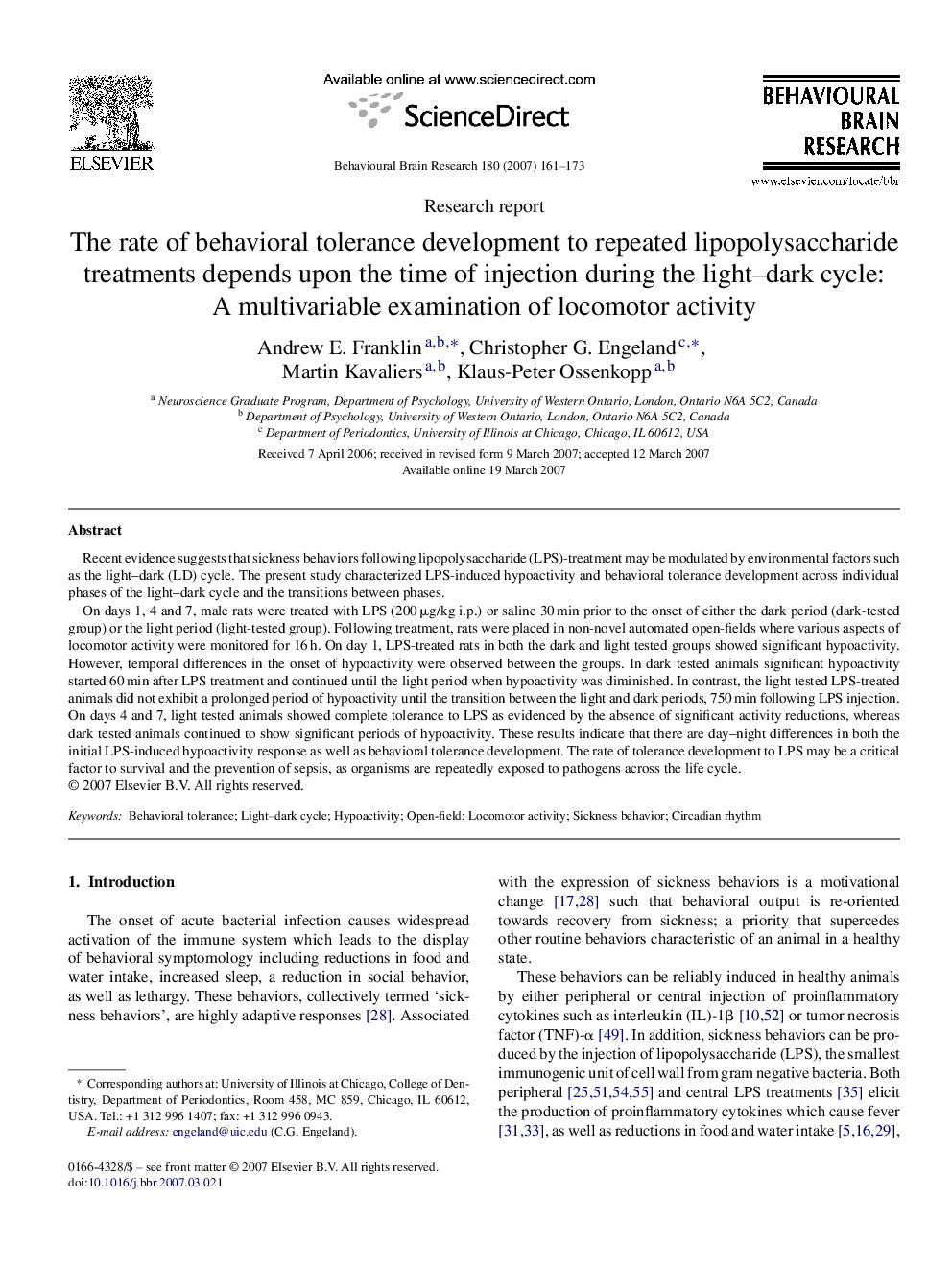| کد مقاله | کد نشریه | سال انتشار | مقاله انگلیسی | نسخه تمام متن |
|---|---|---|---|---|
| 4315376 | 1613002 | 2007 | 13 صفحه PDF | دانلود رایگان |

Recent evidence suggests that sickness behaviors following lipopolysaccharide (LPS)-treatment may be modulated by environmental factors such as the light–dark (LD) cycle. The present study characterized LPS-induced hypoactivity and behavioral tolerance development across individual phases of the light–dark cycle and the transitions between phases.On days 1, 4 and 7, male rats were treated with LPS (200 μg/kg i.p.) or saline 30 min prior to the onset of either the dark period (dark-tested group) or the light period (light-tested group). Following treatment, rats were placed in non-novel automated open-fields where various aspects of locomotor activity were monitored for 16 h. On day 1, LPS-treated rats in both the dark and light tested groups showed significant hypoactivity. However, temporal differences in the onset of hypoactivity were observed between the groups. In dark tested animals significant hypoactivity started 60 min after LPS treatment and continued until the light period when hypoactivity was diminished. In contrast, the light tested LPS-treated animals did not exhibit a prolonged period of hypoactivity until the transition between the light and dark periods, 750 min following LPS injection. On days 4 and 7, light tested animals showed complete tolerance to LPS as evidenced by the absence of significant activity reductions, whereas dark tested animals continued to show significant periods of hypoactivity. These results indicate that there are day–night differences in both the initial LPS-induced hypoactivity response as well as behavioral tolerance development. The rate of tolerance development to LPS may be a critical factor to survival and the prevention of sepsis, as organisms are repeatedly exposed to pathogens across the life cycle.
Journal: Behavioural Brain Research - Volume 180, Issue 2, 18 June 2007, Pages 161–173